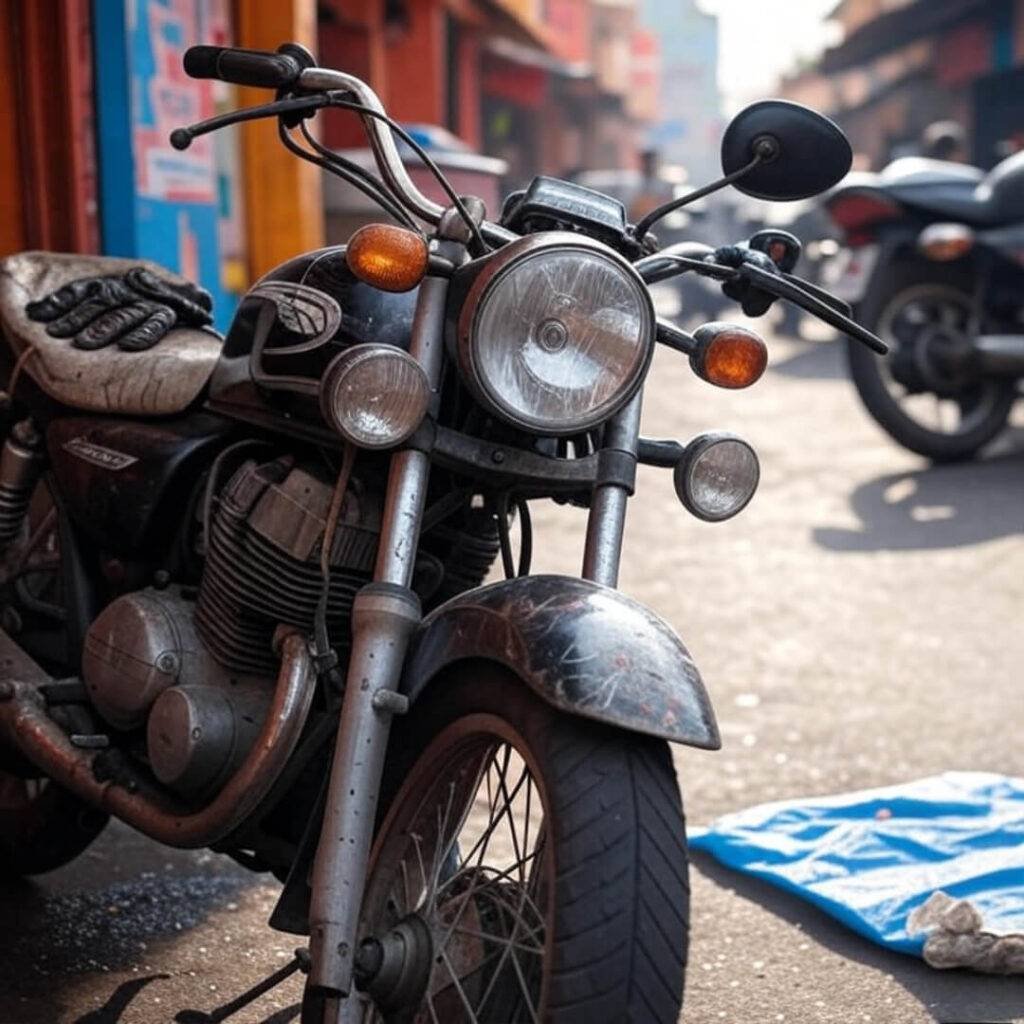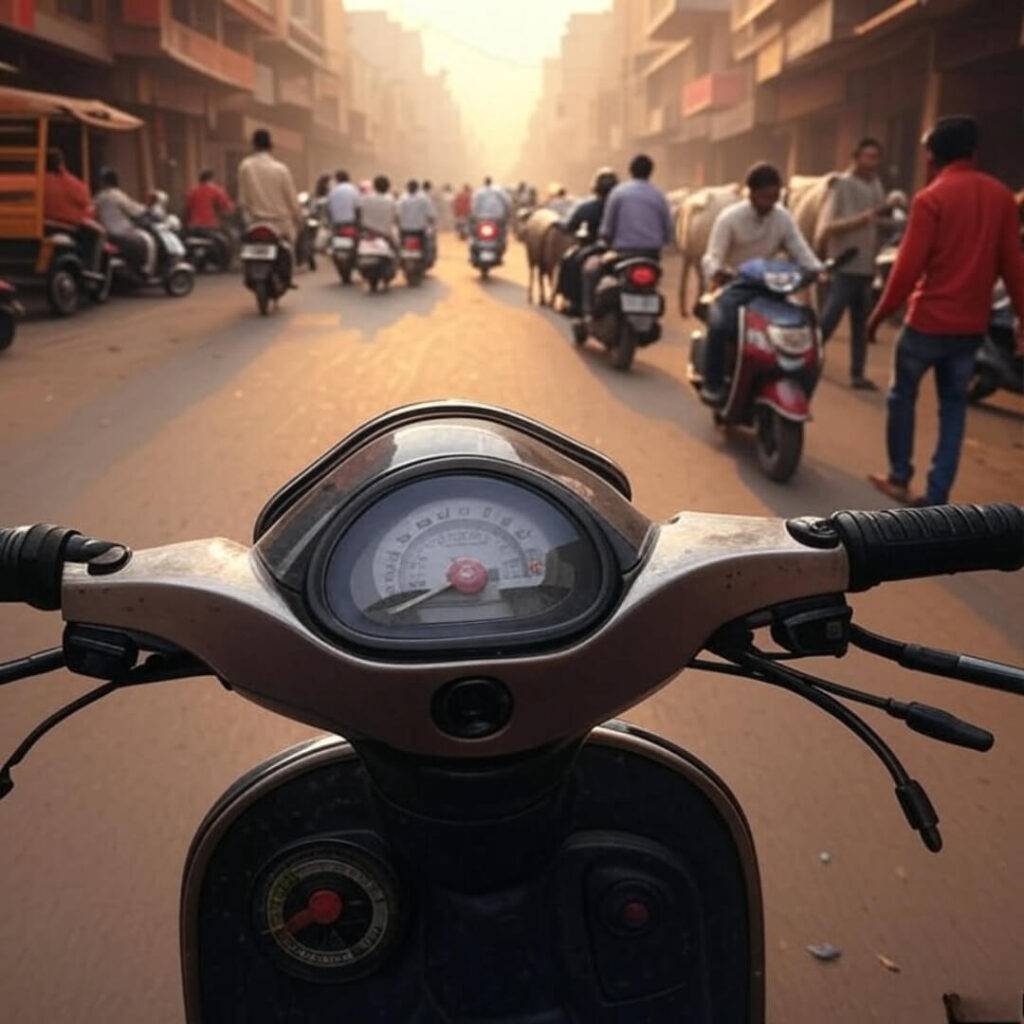Motorcycle accident stats hit me like a truck—figuratively, thank God—while I’m sweating my ass off in a noisy Ahmedabad café, the smell of burnt oil and masala fries clogging my nose. I’m an American dude, totally out of my depth riding India’s insane roads, and lemme tell you, I’ve had moments where I thought I’d be a statistic. Like, just yesterday, I almost kissed a bus’s bumper on NH27 ‘cause I was dumb enough to zone out. The roads here are a circus—potholes, goats, and rickshaws that swerve like they’re drunk. Motorcycle crash stats aren’t just numbers; they’re a wake-up call for idiots like me. So, here’s my messy, honest take on what I’ve learned about rider safety, with some screw-ups I’m not proud of.
Why Motorcycle Accident Stats Scare the Hell Outta Me
I’ve been riding since I was 16, tearing up backroads in Oregon, but India’s roads? They’re next-level chaos. Motorcycle accident stats say riders are 28 times more likely to die than car drivers. That’s not just a stat—it’s a punch to the gut. In the U.S., 2023 had 6,335 biker deaths, 15% of all traffic fatalities, even though bikes are like 3% of vehicles. Here in India, the numbers are fuzzier, but with millions of bikes, the risks feel just as real. I saw a guy in Mumbai riding with no helmet, weaving through traffic like he’s immortal. I wanted to yell, “Dude, head injuries cause most fatal crashes!”
- The stats don’t lie: Helmets cut head injury risk by 69%. I felt like a dork wearing mine in 38°C heat, but I’m not dying for cool points.
- My dumbass moment: I once rode a mile before realizing my helmet strap was loose. Yeah, I’m an idiot sometimes.
- Why it’s personal: A wrecked bike I saw near Surat, crumpled like tinfoil, keeps me up at night.

Motorcycle Crash Stats: The Ugly Truth I Can’t Unsee
Alright, let’s dig into motorcycle crash statistics, ‘cause they’re burned into my brain after a near-miss in Varanasi. In 2025, U.S. biker deaths hit 6,500+, worst since the ‘70s. Crazy, right? Even with fancy tech like ABS. Speeding’s a killer—35% of fatal crashes involve riders going too fast. I’ll confess, I’ve gunned it on empty roads near Jaisalmer, chasing that high, but after skidding on gravel, I’m done being a moron. Booze is another issue; 28% of crashes involve drunk riders. I don’t drink and ride, but I’ve seen guys at dhabas chugging Kingfishers before hopping on their bikes. Like, seriously?
- City vs. country: 65% of fatal crashes are urban, like Delhi’s madhouse streets.
- Night rides suck: After dark, crash risk jumps 30%. My headlamp barely helped in Udaipur’s fog.
- Lane-splitting chaos: It’s legal back home, but here it’s a death wish. 15% of crashes tie to bad splits.

My Screw-Ups and Motorbike Safety Tips
I’m no pro rider, okay? I’ve done stupid shit, like tailgating a truck in Gujarat ‘cause I was hangry and late. Motorcycle accident stats scream rider error’s a big deal—reckless moves cause tons of crashes. India’s taught me to chill the hell out. Here’s my advice, half from stats, half from eating dust:
- Helmet or bust: Helmets save lives 37% of the time. I look like a sweaty nerd, but I’m alive.
- Wear bright stuff: Low visibility’s a crash factor. My neon vest makes me look like a clown, but drivers see me.
- Slow down, dude: Speeding’s in 30% of fatal crashes. I ease up in markets now, even if I’m starving.
- Get trained: 36% of fatal crashes involve unlicensed riders. I took a course before India—saved my ass.
I’m still a work in progress, and I’ll probably mess up again. But these motorbike safety tips keep me breathing. Check NHTSA’s safety page for more.

Motorcycle Accident Stats in India: My Hot Mess Take
India’s roads are a fever dream. Motorcycle crash stats here are vague, but the danger’s in your face. I read on Permit.Bike that global risks like speeding and no helmets apply here too. Riding through Ahmedabad, I saw a guy texting while dodging traffic—my jaw dropped. In the U.S., 60% of fatal crashes are on smaller roads, and I bet India’s narrow highways are worse. My worst scare? A cow wandered onto the road near Dwarka, and I swerved, nearly clipping a tempo. I was shaking, but it taught me to expect anything.
- Local hazards: Potholes, animals, random U-turns—India’s roads don’t play nice.
- Cultural thing: Some riders skip helmets to look cool. I get it, but it’s dumb.
- My plea: Ride like everyone’s out to get you. Defensive driving’s my mantra now.
Wrapping Up My Motorcycle Crash Stats Ramble
Motorcycle accident stats are a slap in the face, y’know? I’m just an American dude, dodging cows and rickshaws in India, trying not to end up a number. The stats—6,500+ U.S. deaths in 2025, 28 times higher risk for riders—freak me out, but they keep me sharp. I’ve had close calls, done dumb stuff, and I’m not proud of it. Writing this feels like yelling into the chaos of India’s traffic. If you ride, know the bike accident data, gear up, and ride like you’re dodging fate. Got a story or tip? Hit me up in the comments—I’m all ears for how you stay safe.





